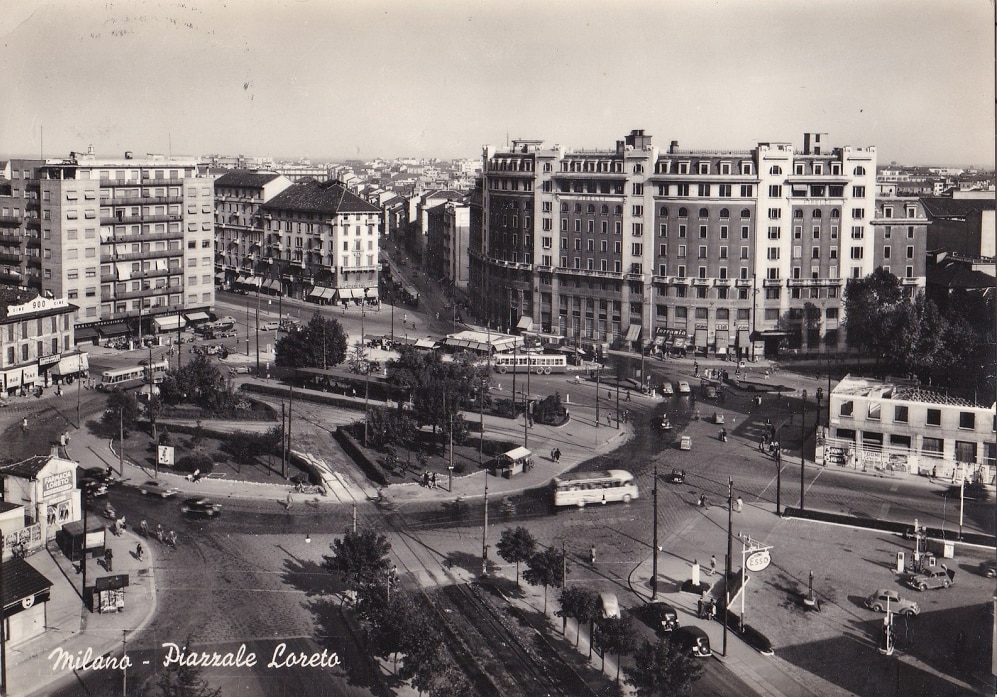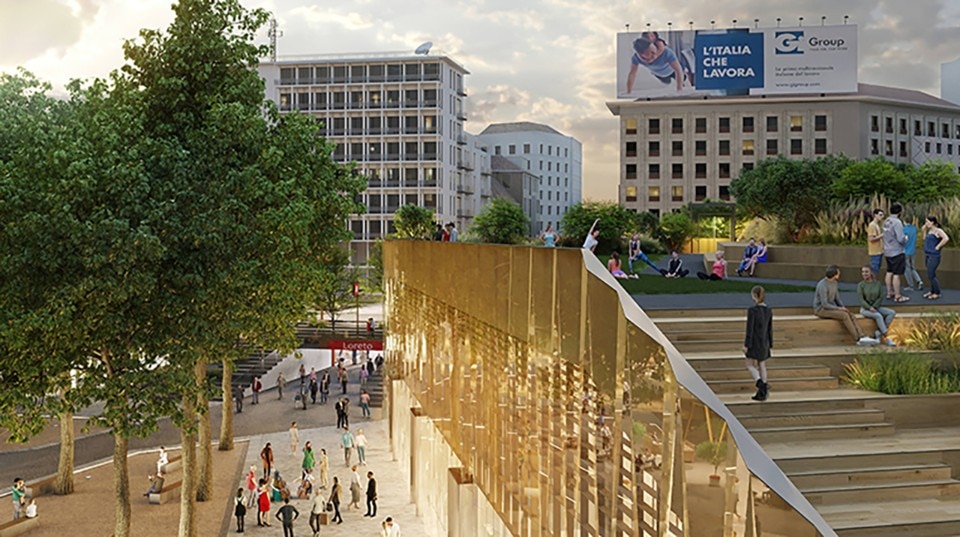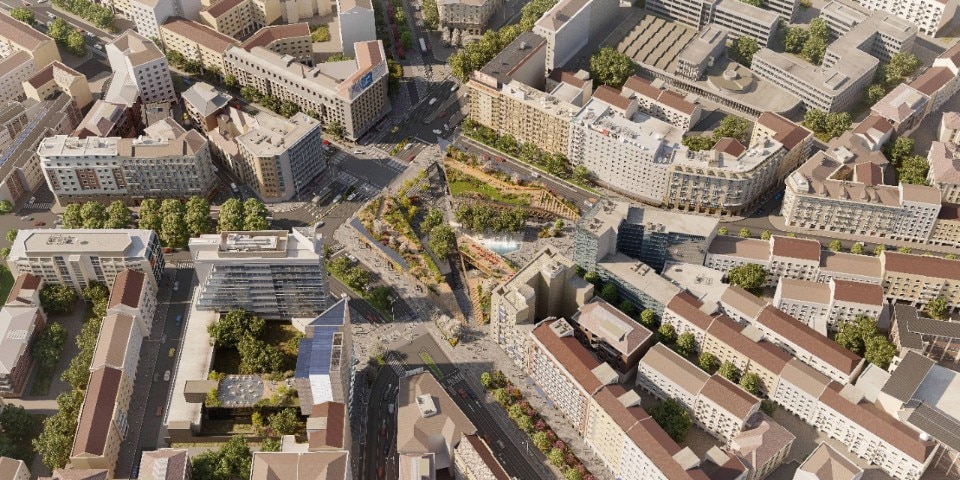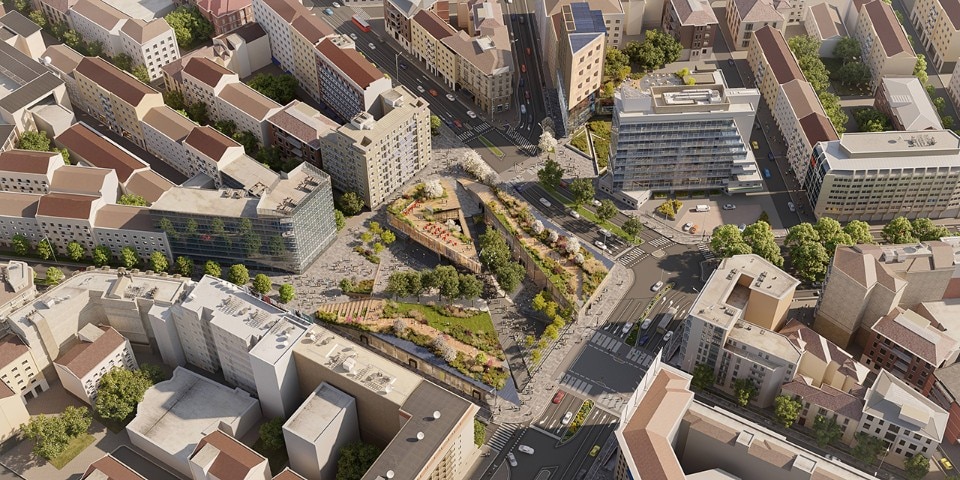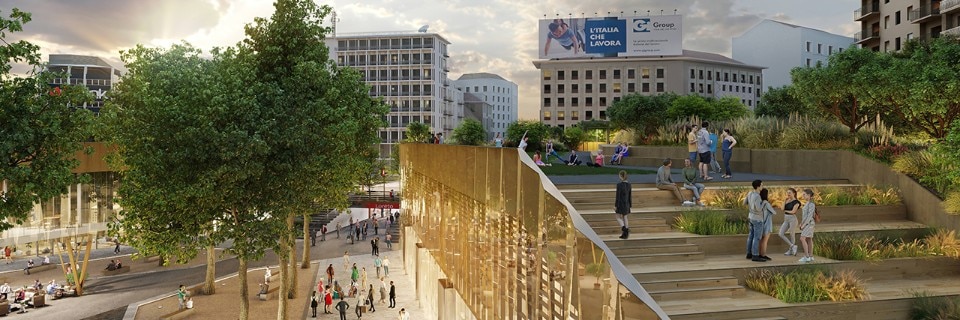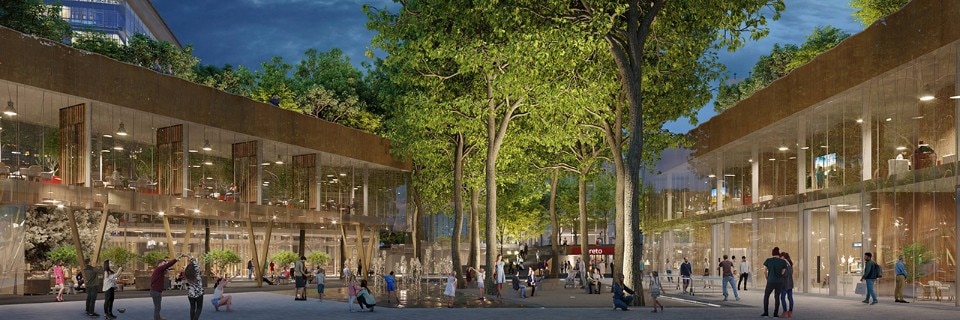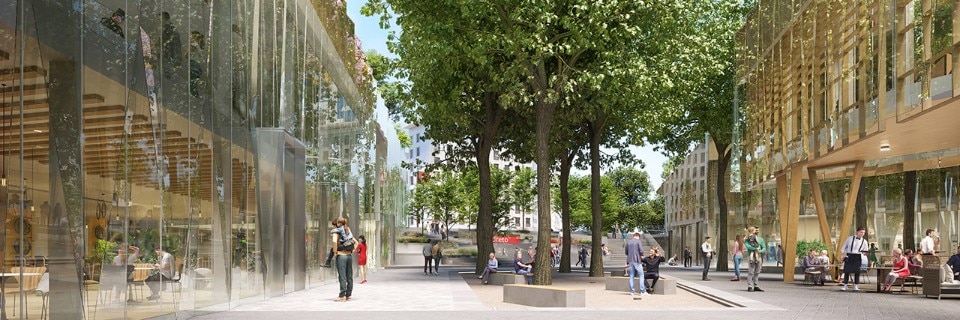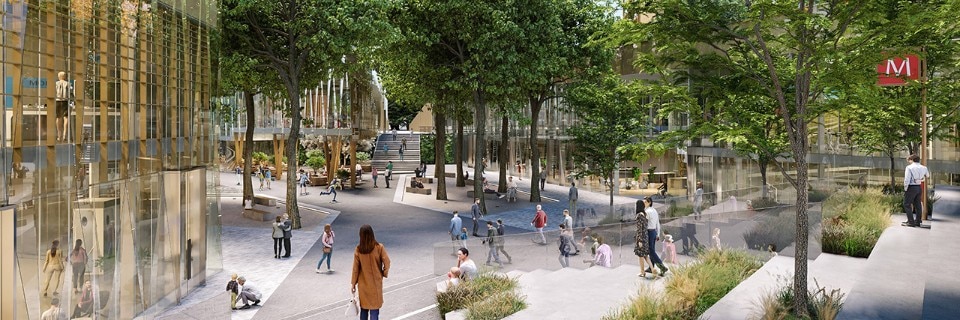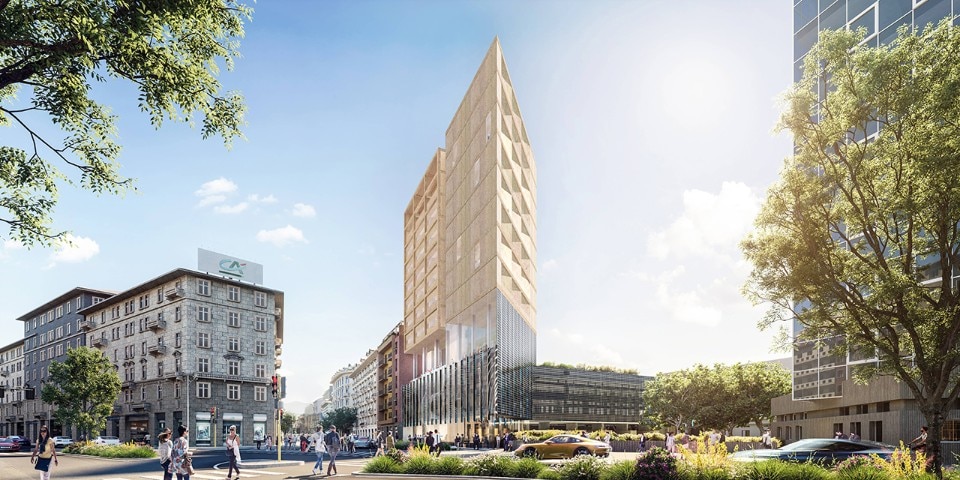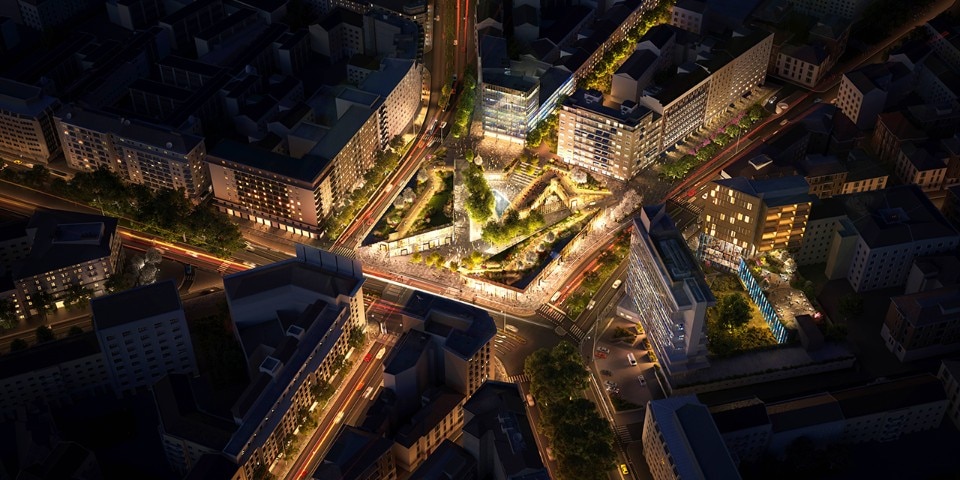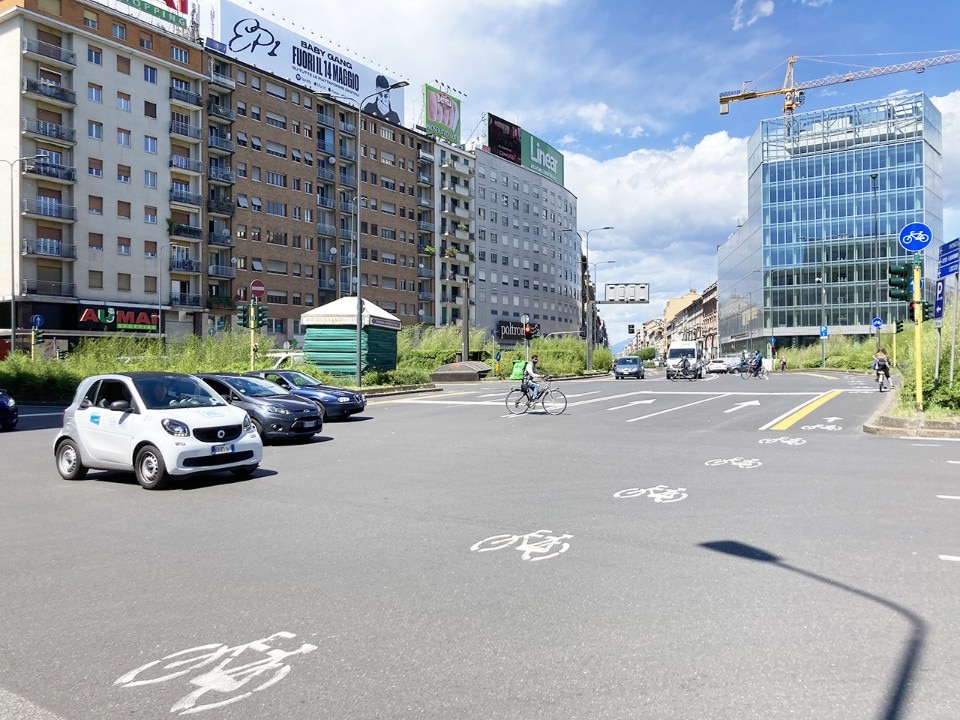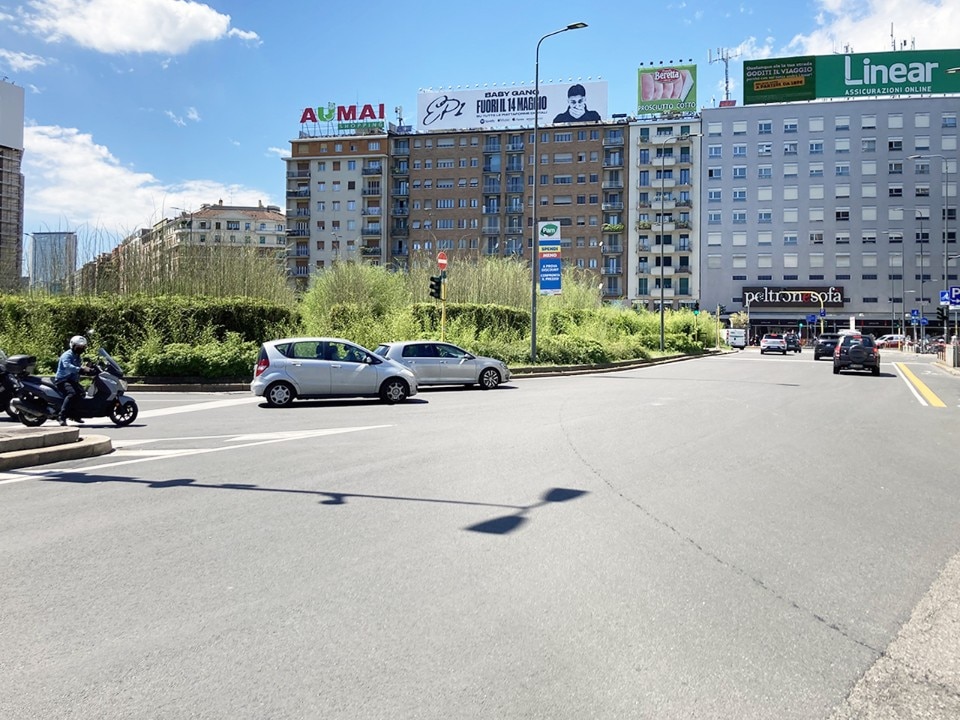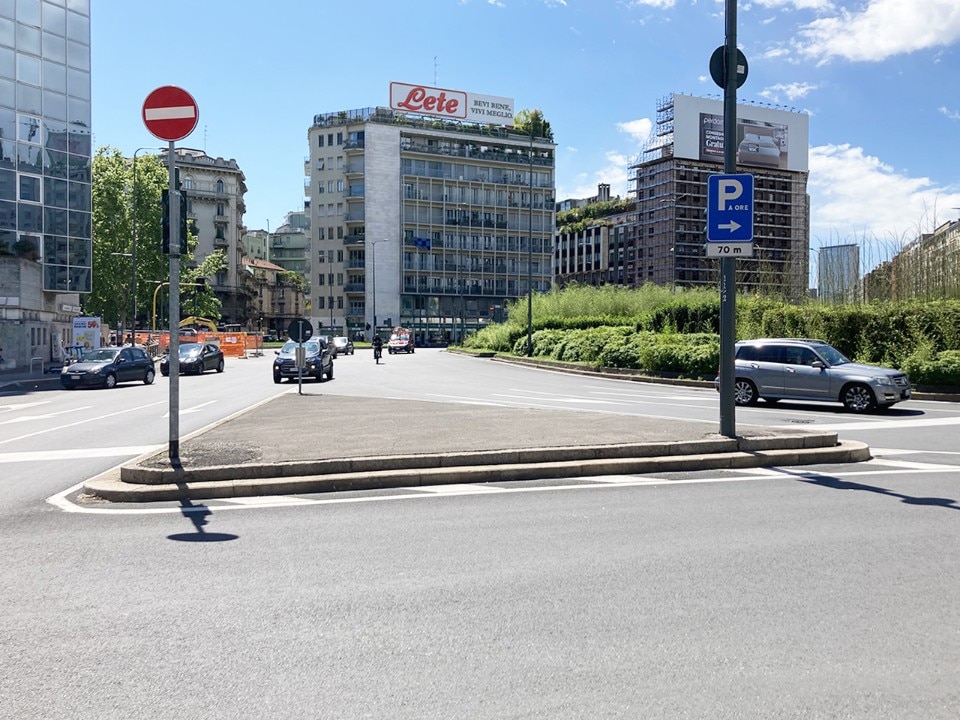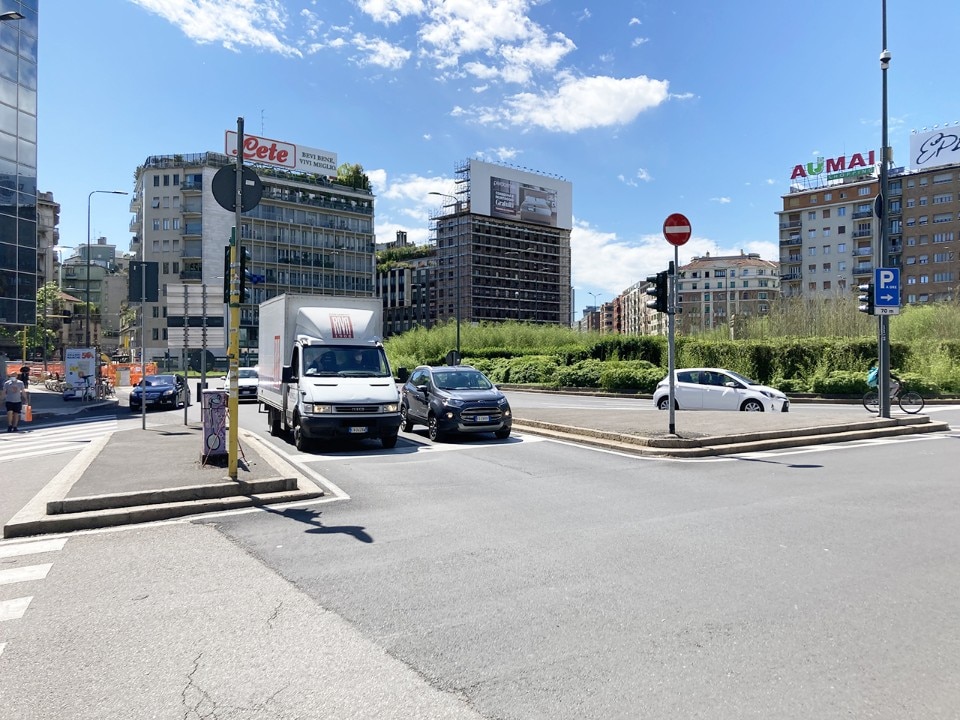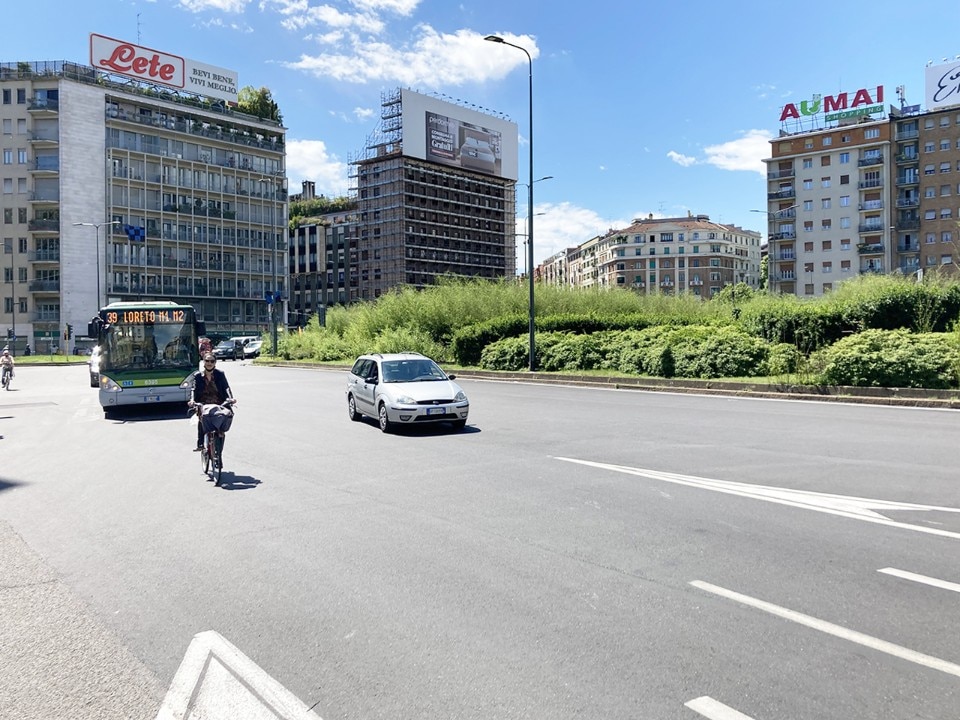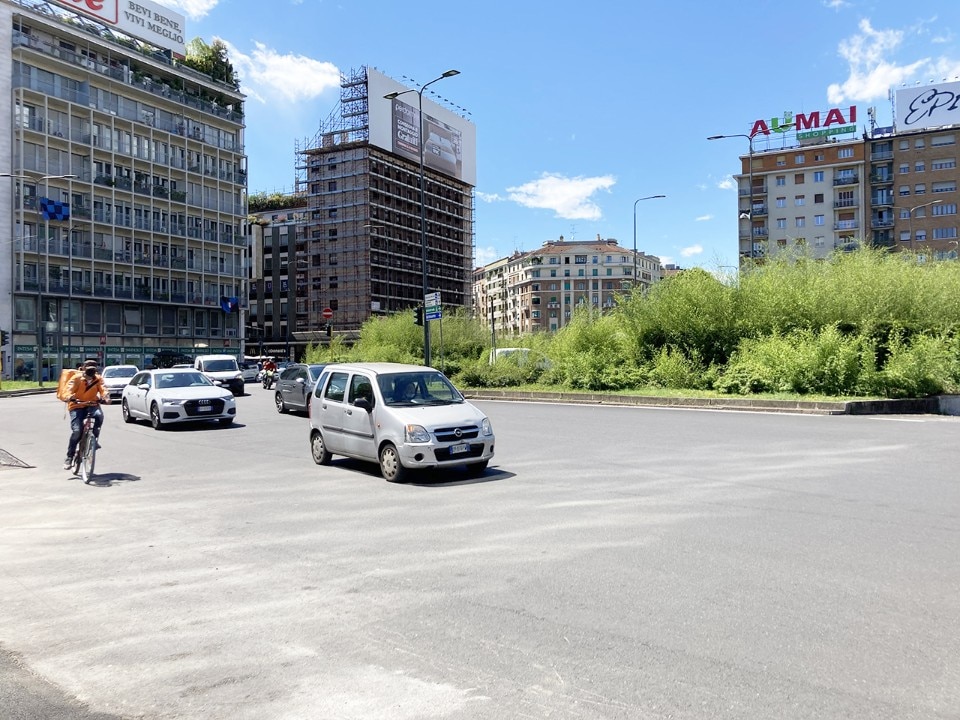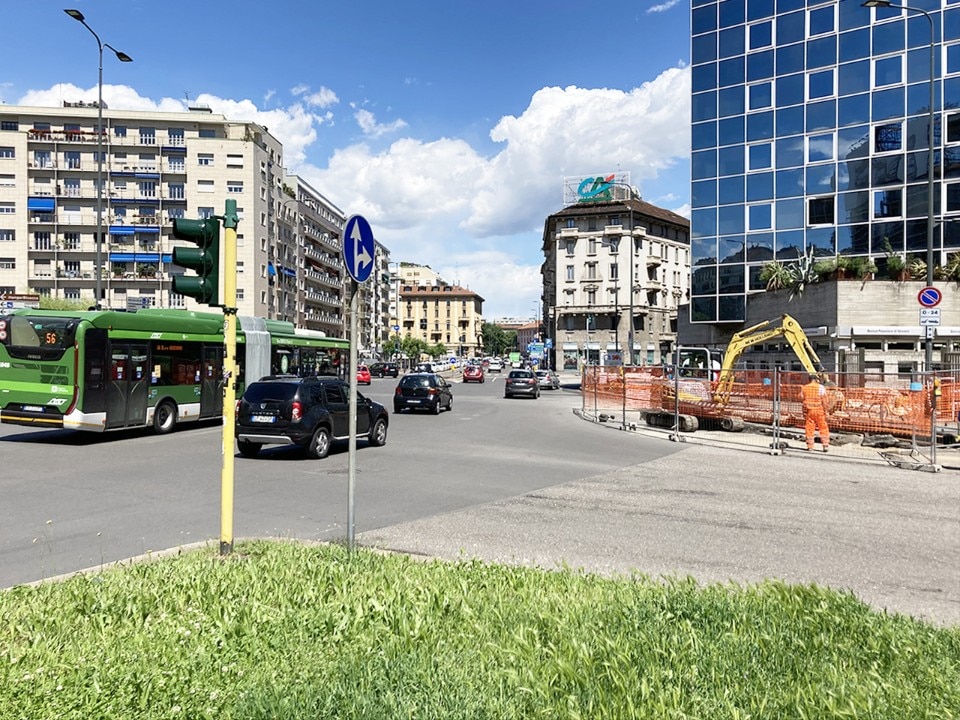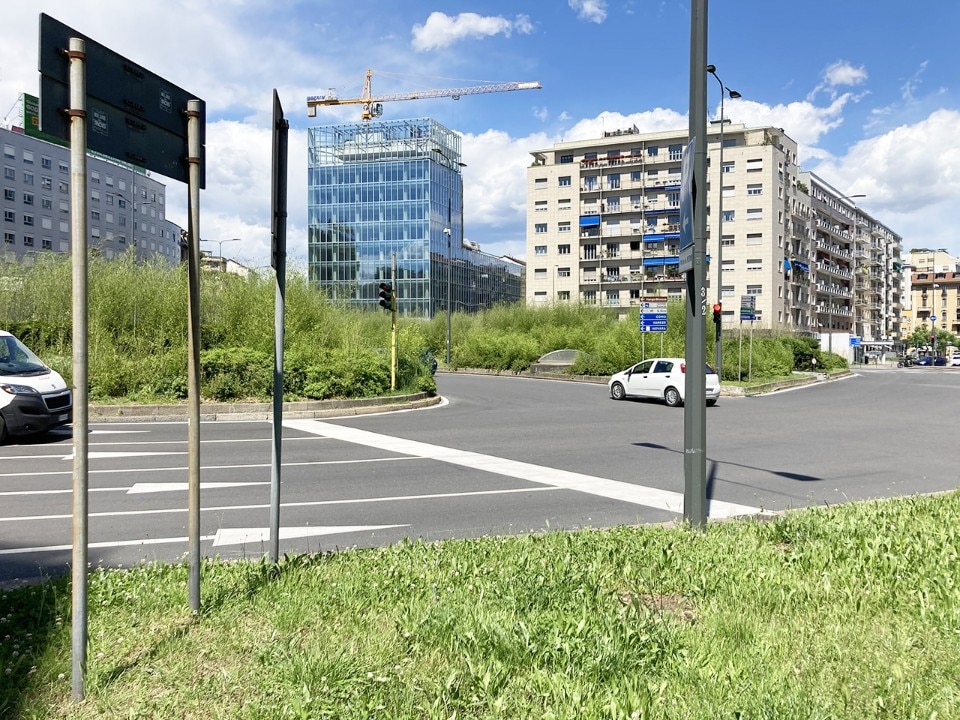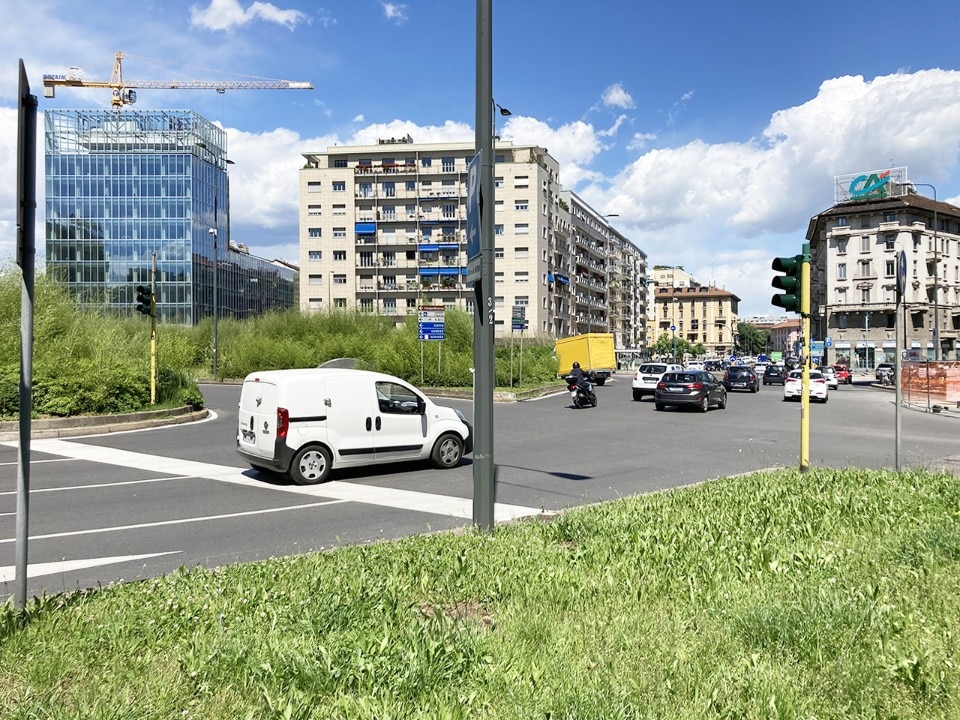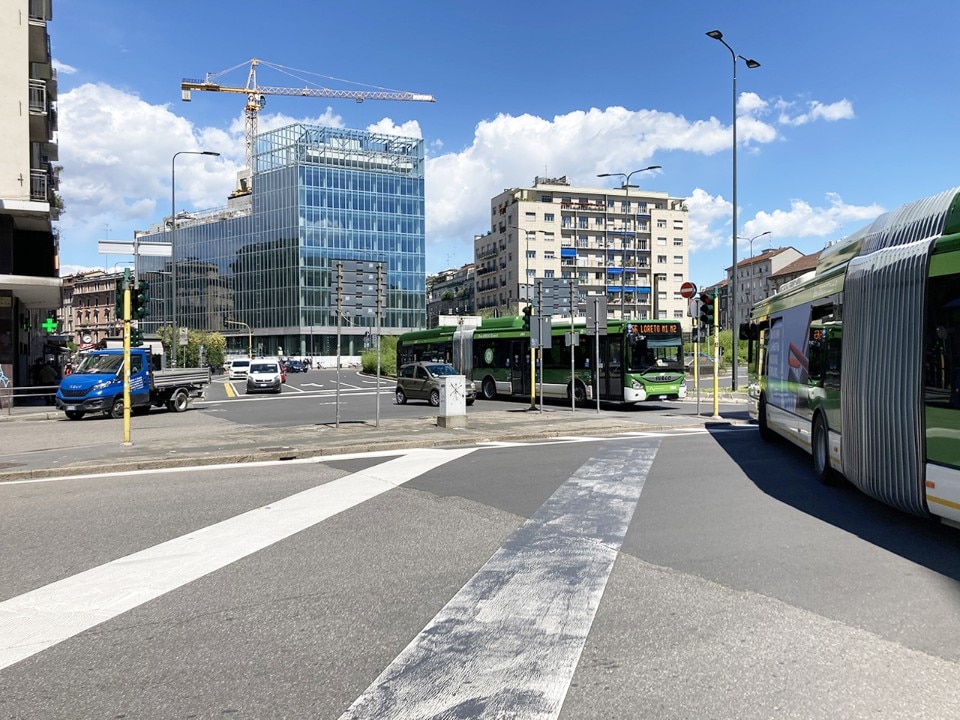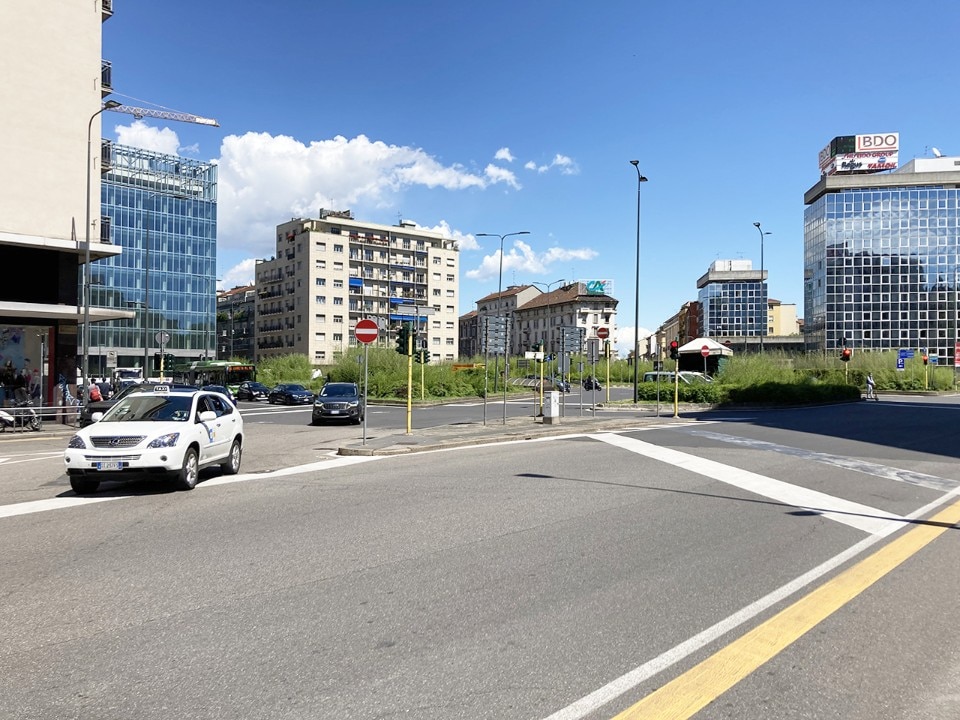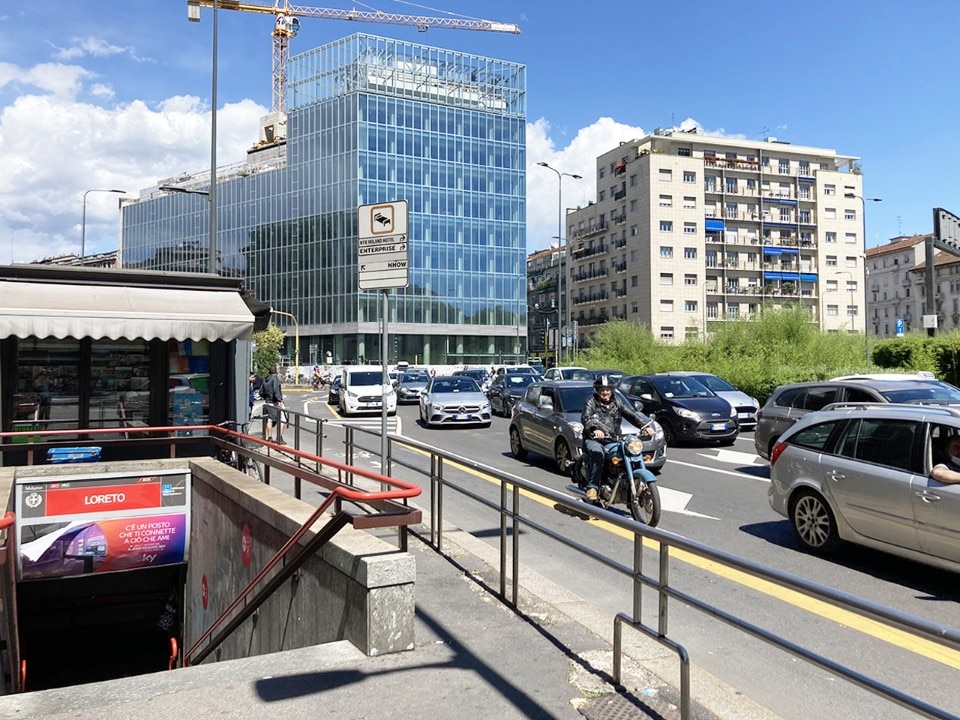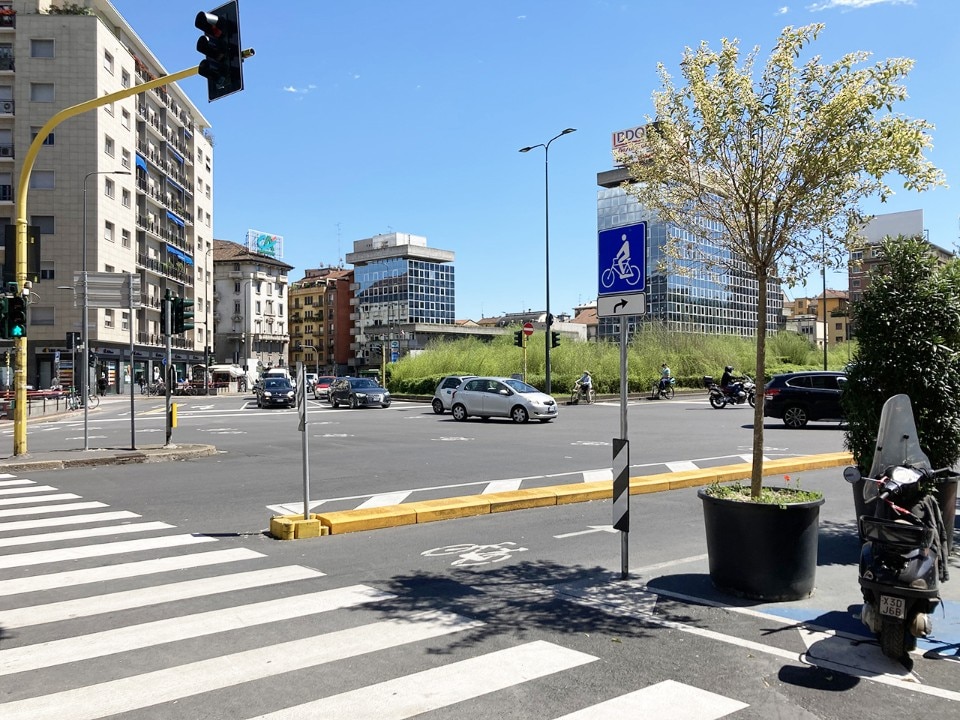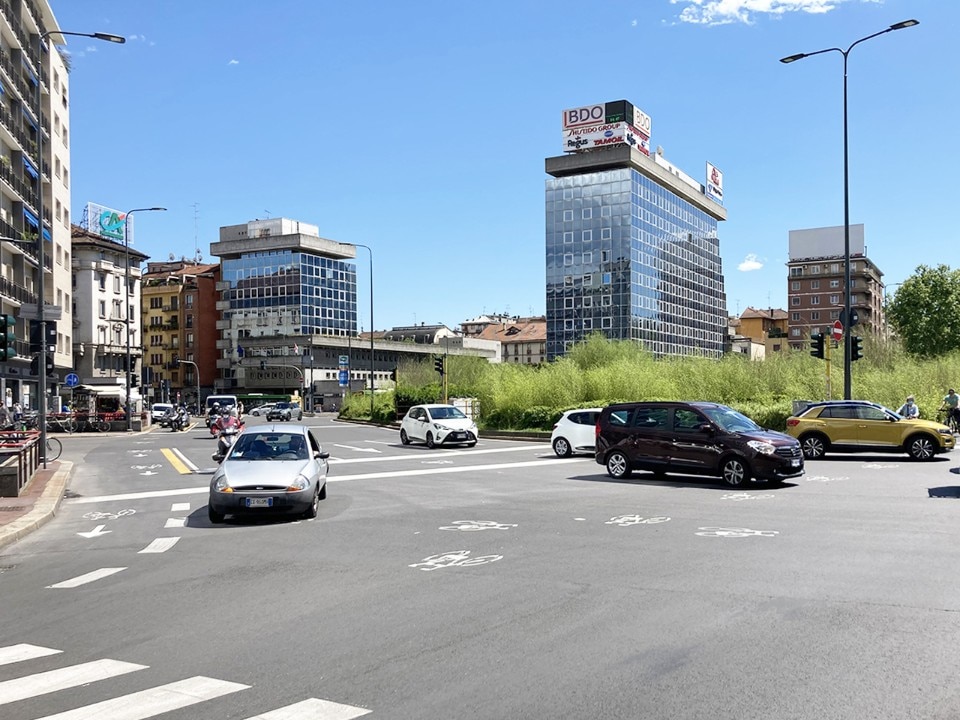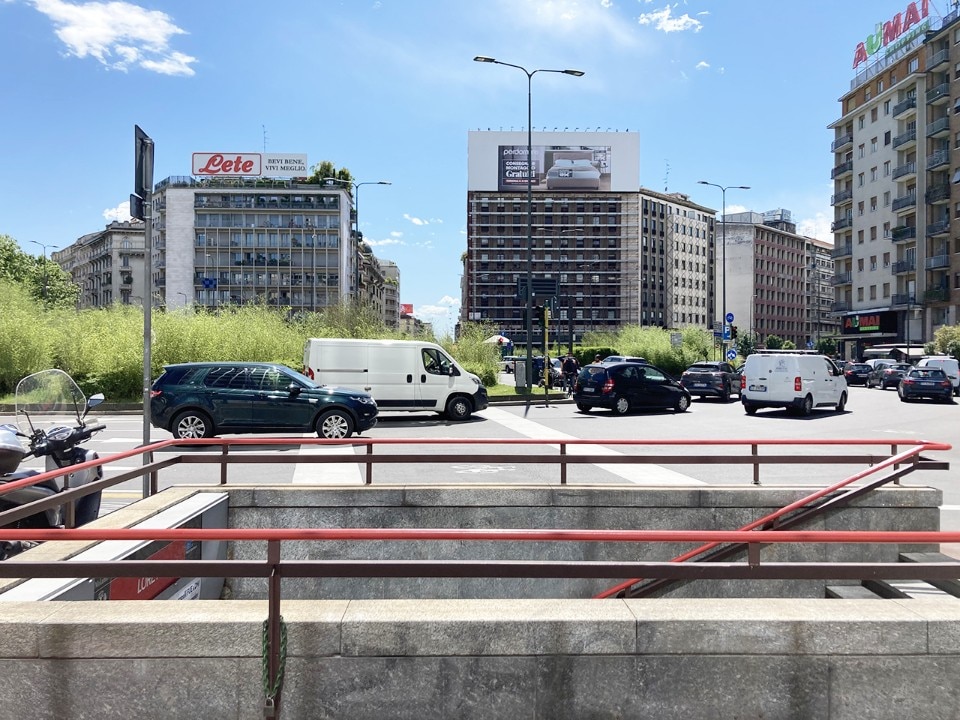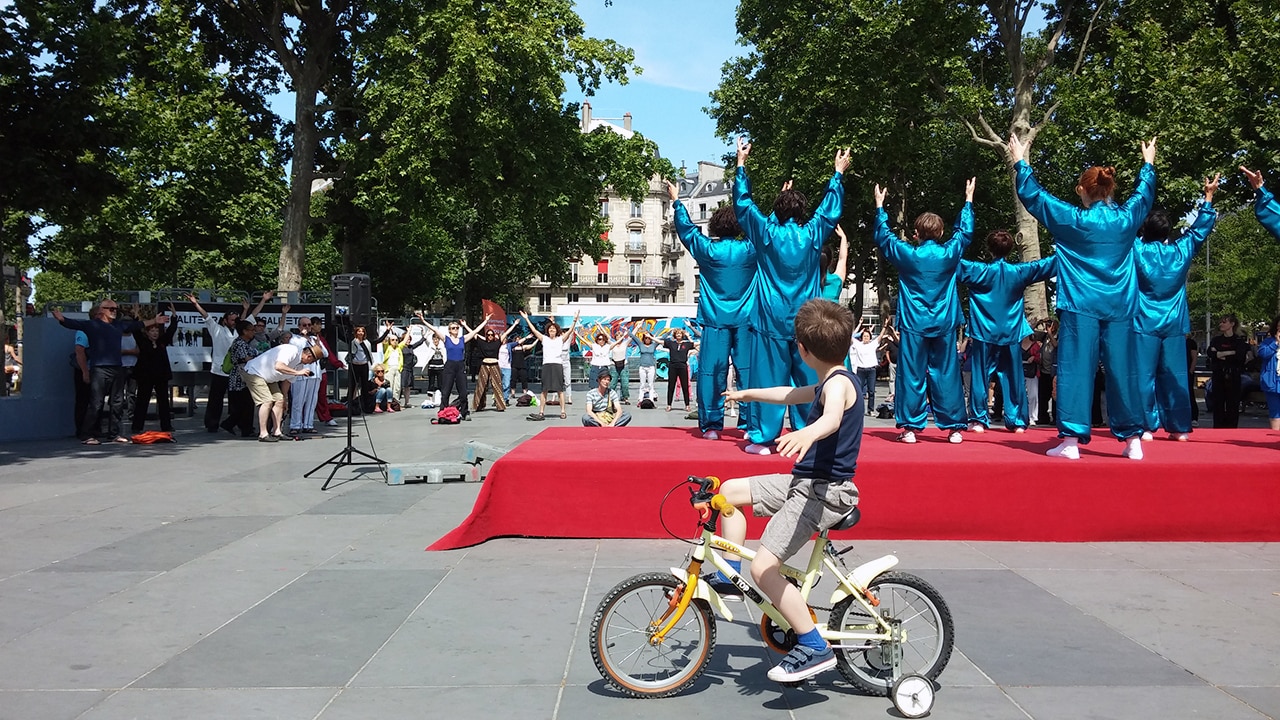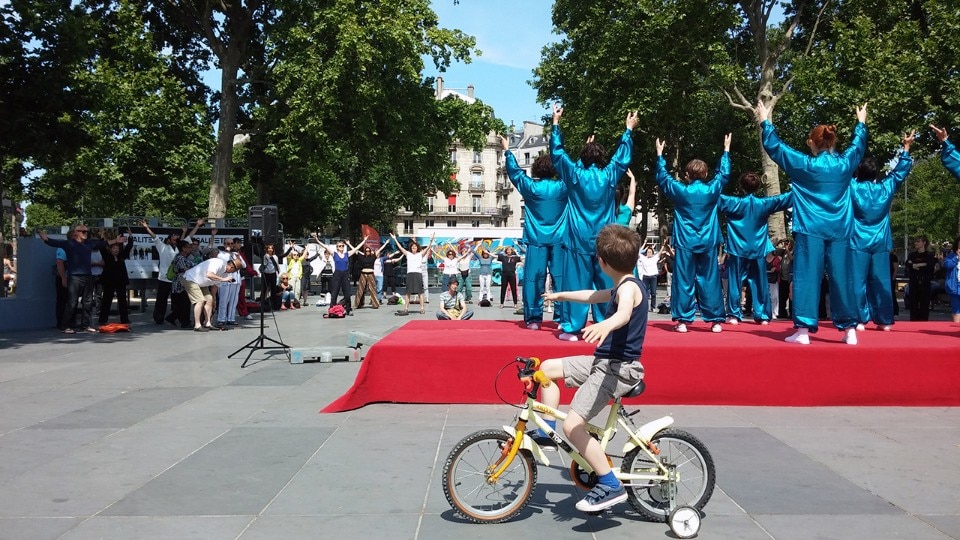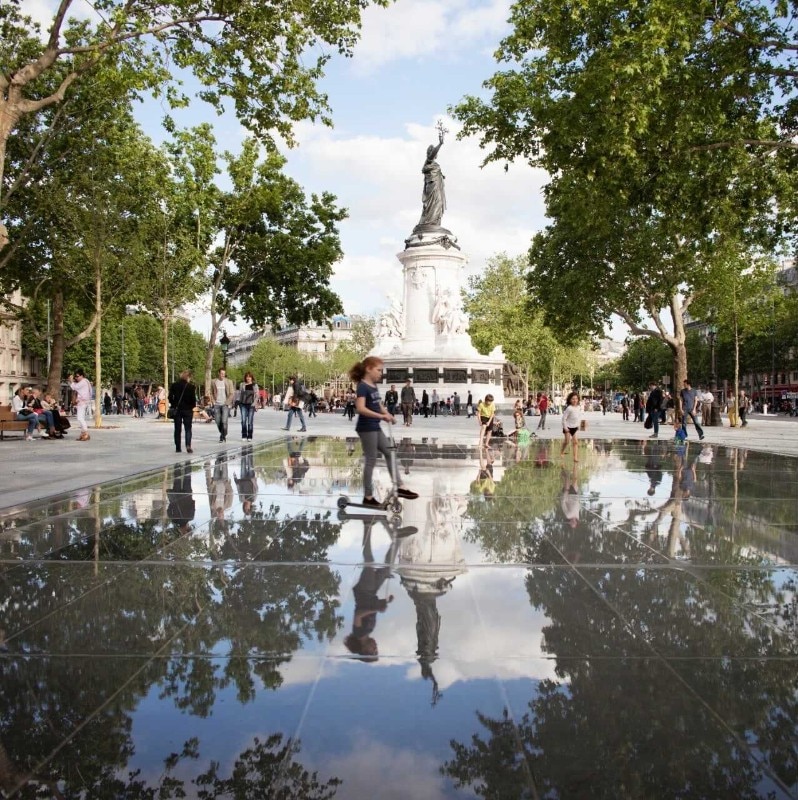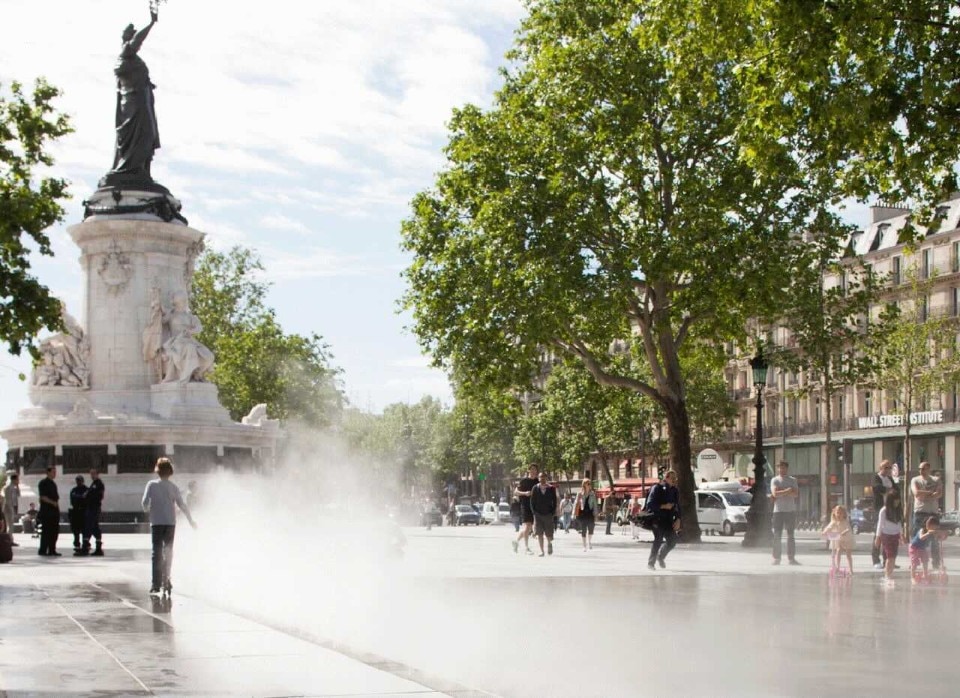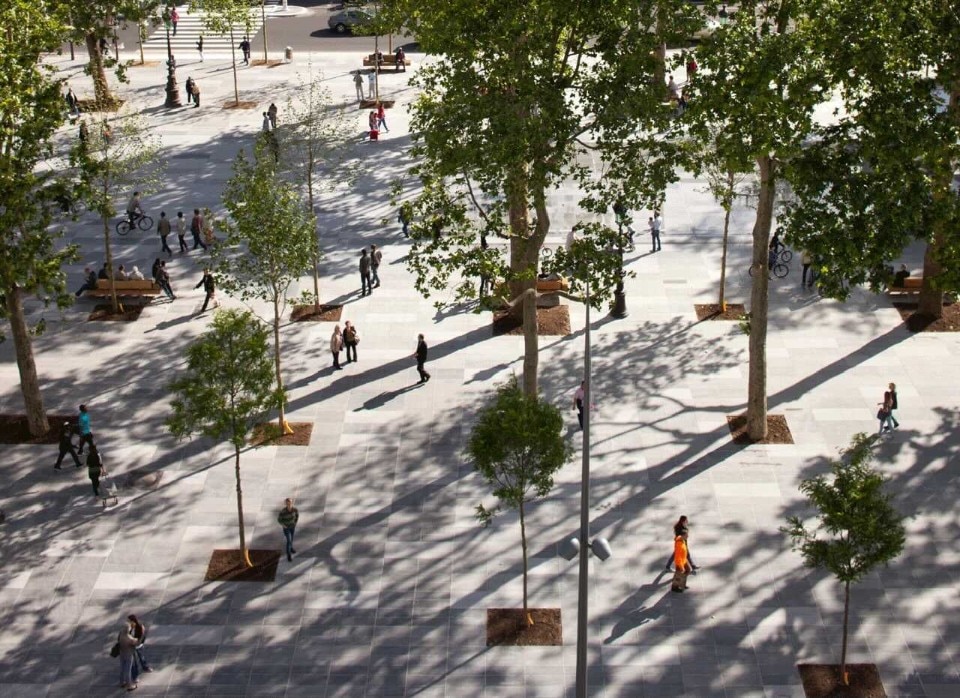On May 11 2021 the team led by Ceetrus Nhood and including Metrogramma, Mobility in Chain, Studio Andrea Caputo, LAND, Temporiuso and Squadrati wins the competition for the renovation of Piazzale Loreto in Milan, promoted by Reinventing Cities, with their proposal LOC – Loreto Open Community. Precedence to pedestrian and bicycle mobility, plenty of trees and suspended gardens, spaces for gathering and for local shops, wooden structure and low-carbon buildings, the commitment to a participatory process and to a copious events program: the press conference and the project descriptions try to seduce the public opinion by mixing all of the key-words of contemporary communication about the city. But, in fact, something is not right.
An ambiguity that should not be underestimated
Today, Piazzale Loreto functions (clumsily) as a junction of urban traffic. Viale Brianza, Viale Monza, Via Padova, Via Costa, Via Porpora, Viale Abruzzi, Corso Buenos Aires and Via Doria collide in a giant fake roundabout, cut through by two by-passes multiplying stop-start flows in every possible direction. Thanks to Mobility in Chain’s expertise, the project brilliantly addresses this issue: the roundabout is replaced by a single road, which connects Viale Abruzzi with Viale Brianza, and while doing so crosses the inbound flows from the other streets, with a sequence of crossroads controlled by traffic lights. This solution has already proved to be effective on several occasions, for instance in Paris’s Place de la République, redesigned by TVK in 2013.
The competition, though, has the announced and primary goal to “give back” Piazzale Loreto to the city, rethinking it from an infrastructure into a full-fledged public space, a burdensome transformation that is willing to rely on private funds, as is always the case for Reinventing Cities. It is not by chance if several protagonists of this affair mention as successful precedents for LOC Piazza Gae Aulenti and Piazza Tre Torri, praised as the results of a positive negotiation between the municipality and the promoters of Milan’s largest real estate developments from the years 2000. And here is where an ambiguity surfaces that should not be underestimated.
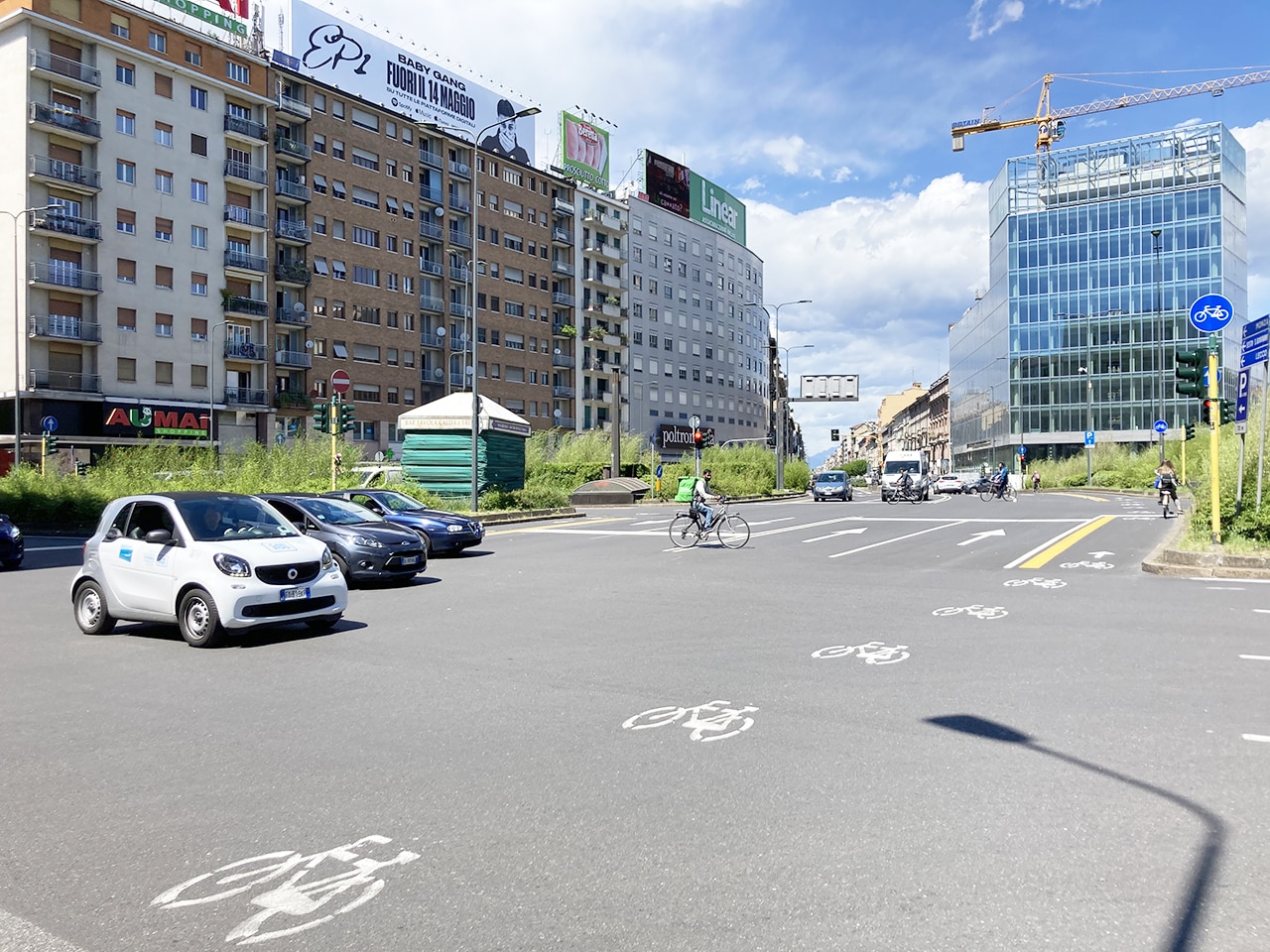
A square should remain a square for good
Regardless of the specific ownership of their lands, the sites of Porta Nuova and City Life existed as perimeters to be opened and reintegrated in the functioning of the city. The outcomes of those experiences can be discussed at length but the challenge, in those cases, was the acquisition of new surfaces and their re-signification within an urban ensemble from which they were previously left out. A part of these surfaces has acquired the status of a square.
On the other hand Piazzale Loreto, even if it has been mortified by its conversion into an interchange – one of the eyesores generated by the working sites of the first metro line in the 1960s – is a square in all respects. During its centuries-long expansion process, from the 18th century until today, the city has crossed a place that it has qualified first as the Rondò di Loreto and later as the namesake esplanade. It has maintained it as a piece of its system of streets and squares and it used its extension as a reference for the definition of the surrounding blocks’ building index.
Therefore, while today Piazzale Loreto doesn’t host the typical uses of a square, it undeniably features its shape, as a surface of urban void surrounded by buildings, and where several streets converge. The Porta Nuova and City Life areas could potentially become everything; Piazzale Loreto must remain a square for good.
How can we protest on a cafeteria’s rooftop?
The competition misconception stems from an exact but questionable recourse to the principles of equalization (“perequazione” in Italian), a term that in the field of urban planning identifies, in short, a mechanism that grants the private a certain amount of building volumes in exchange for the transfer to the public authority of areas or services of general interest. The general interest here is the renovation of the square, that is funded through a twofold strategy: by the refurbishment of the office complex on the corner between Via Porpora and Viale Abruzzi, extended with a new tower, and more importantly by adding new mostly commercial volumes to the retail spaces already existing in the metro line mezzanine, and now surfacing above ground.
The outcome of this second intervention is paradoxical: the square’s spatial unity, that is its very existence as such, is nullified by constructions that saturate and shatter it into a multiplicity of surfaces, whose nature remain ambiguous. The public space will still exist on a regulatory plan and in terms of urban standards, but it is annihilated in its capacity to act as such. The need for special maintenance works on a public asset results in the alienation of the same asset. The potential square is killed in its crib.
The comparison with Place de la République is again particularly meaningful. The Parisian square also stands over the mezzanine of several metro lines, and for many years it also worked as a complicated roundabout which was hard to cross. TVK turns it into an immense pedestrian surface, delicately annotated by its pavement’s color shades and slight slopes, a little pavilion for a cafeteria and some regular rows of plane trees. Even if one decides to overlook the abysmal distance between TVK’s design and LOC in terms of architectural quality, in favor of the former, it is impossible to look the other way when it comes to the different practices that their spatial configurations allow.
One single example will suffice. In a democratic country a major square is first and foremost the place of rallies, and even more so one which is so charged with memories as Piazzale Loreto, a symbol of Italian antifascism. And as a matter of fact on the seamless expanse of the renovated Place de la République, shaded by the Marianne statue, icon of the republic, gatherings have immediately multiplied. 269 of them were counted just in 2015, of all scales and advocating for all types of causes. Once Piazzale Loreto is chopped by LOC, where and with how much credibility can we protest between flowerbeds, bushes and tree trunks of various kinds? Or squeezed between Unieuro or Calzedonia (common Italian stores) window displays? Or on a cafeteria’s sloping rooftop?
A dangerous precedent
The proposal for Piazzale Loreto conceptually moves towards a different direction than several micro-interventions, both tactical and permanent, promoted cleverly and with foresight by this administration. For instance the new squares of NoLo – the recently rebranded neighborhood right North of Loreto – were oversized and nameless crossroads; now they are car-free areas, lived intensely as neighborhood public spaces and also identified as such by the toponomy invention of a Giardino degli Artisti and of a Piazza Spoleto. The most confident – such as this article’s author – could interpret these and other interventions as the fragments of a project of public space reconquering, incremental but coherent. Looking at the destruction of Piazzale Loreto, though, Milan’s “piazzette” are breadcrumbs scattered in a city that in the meantime has been robbed of the bigger slice of the cake.
Furthermore, the project for Piazzale Loreto represents a dangerous precedent. If it is realized under these terms, even more that with these shapes, what will guarantee that in the next years a similar operation of saturation and shattering of an open space won’t be carried out also in other junction-squares located over metro lines' mezzanines? Maybe in Piazza Amendola? Or in Piazza della Repubblica? The list could go on and on and on.
A possibly disproportionate scandal was provoked by the transformation of Piazza del Liberty, a privately-owned area, into the elegant urban staircase designed by Norman Foster, which actually has almost amplified its capacity to work as a gathering space. More than any other Milanese urban querelle from the last few years, the case of the competition for Piazzale Loreto must trigger a serious reflection on the role of private promoters in the definition of the quality of city spaces, on its potentials and its limits, and on the need of a public authority that is able to unambiguously take the side of the collective interest.
Preview image: Piazzale Loreto, Milan, Italy, 1948, via Wikimedia Commons


